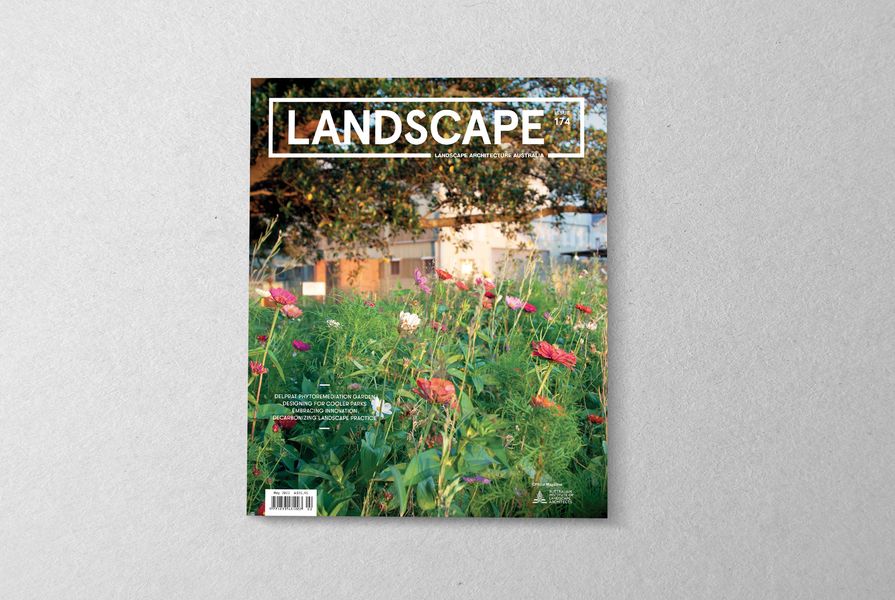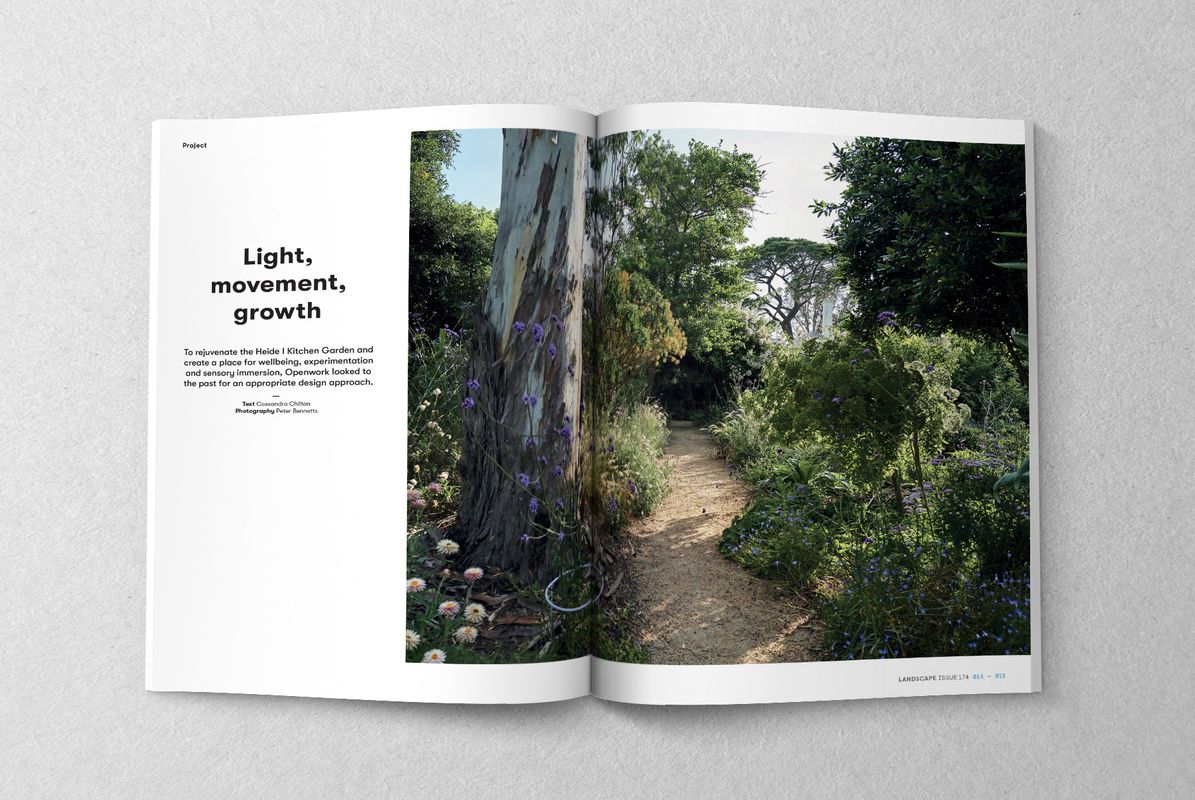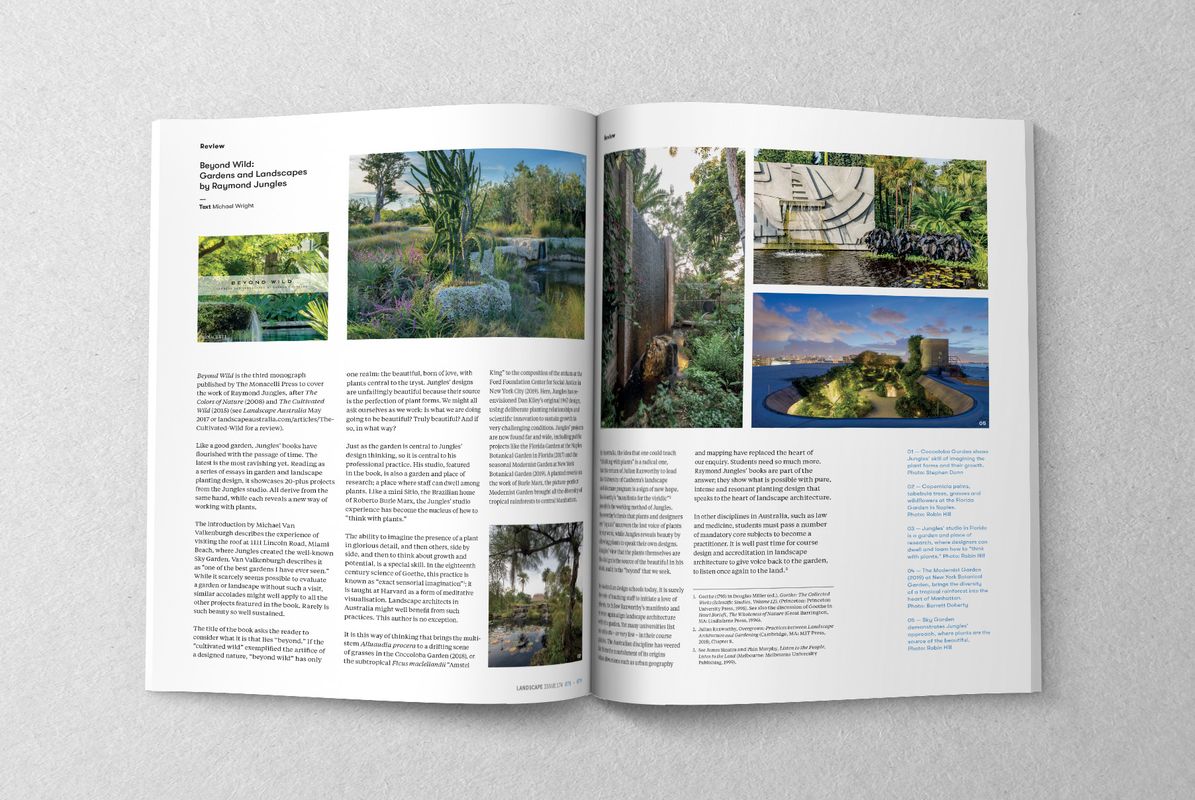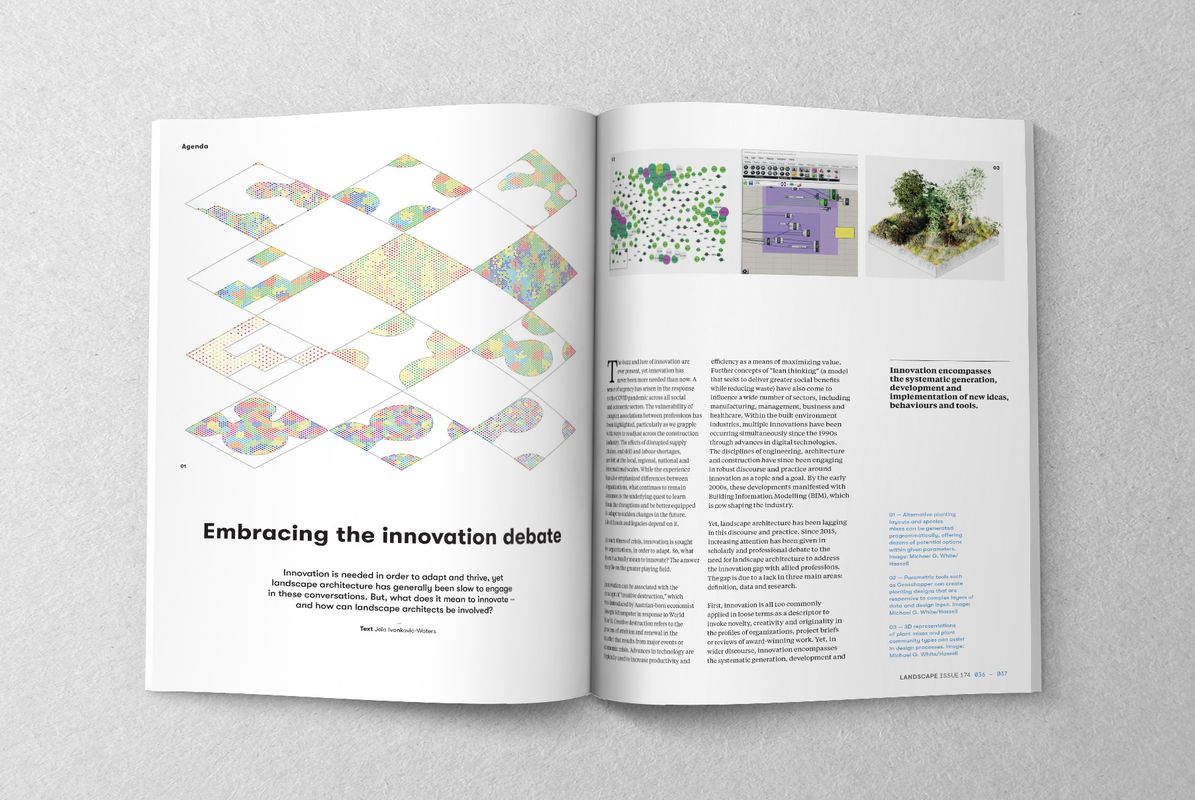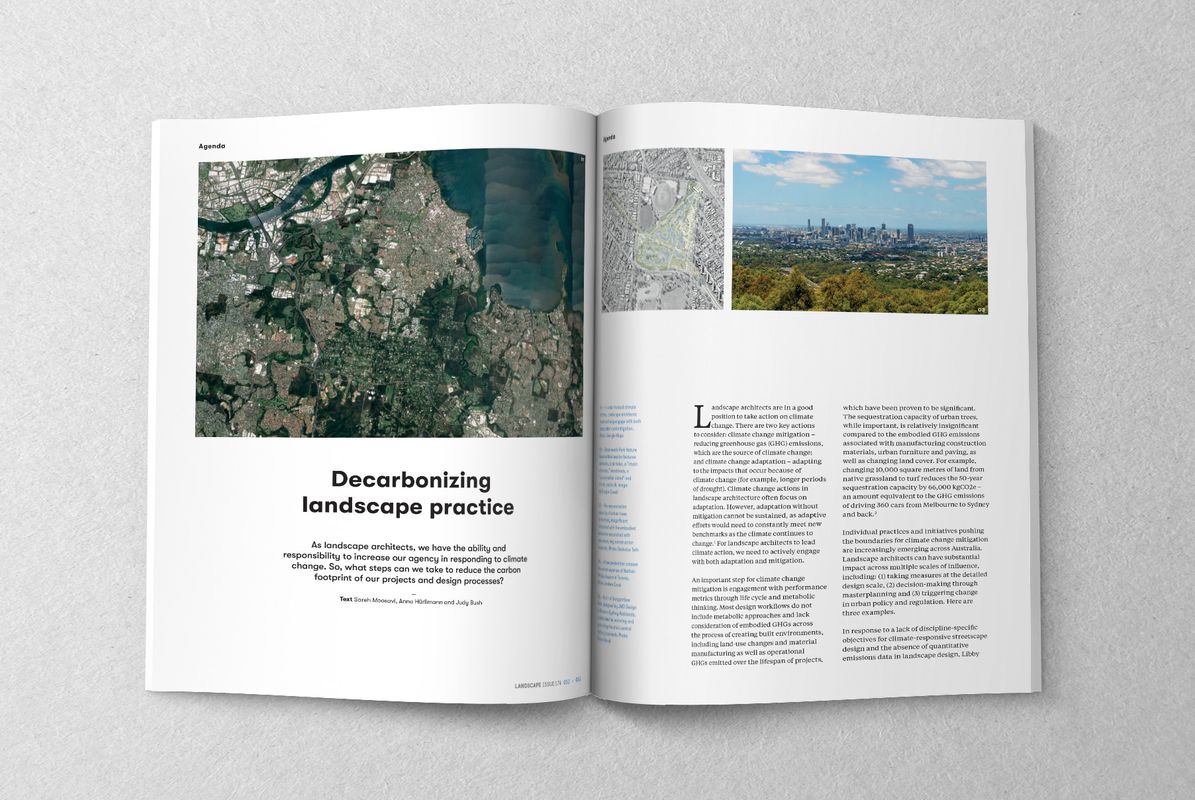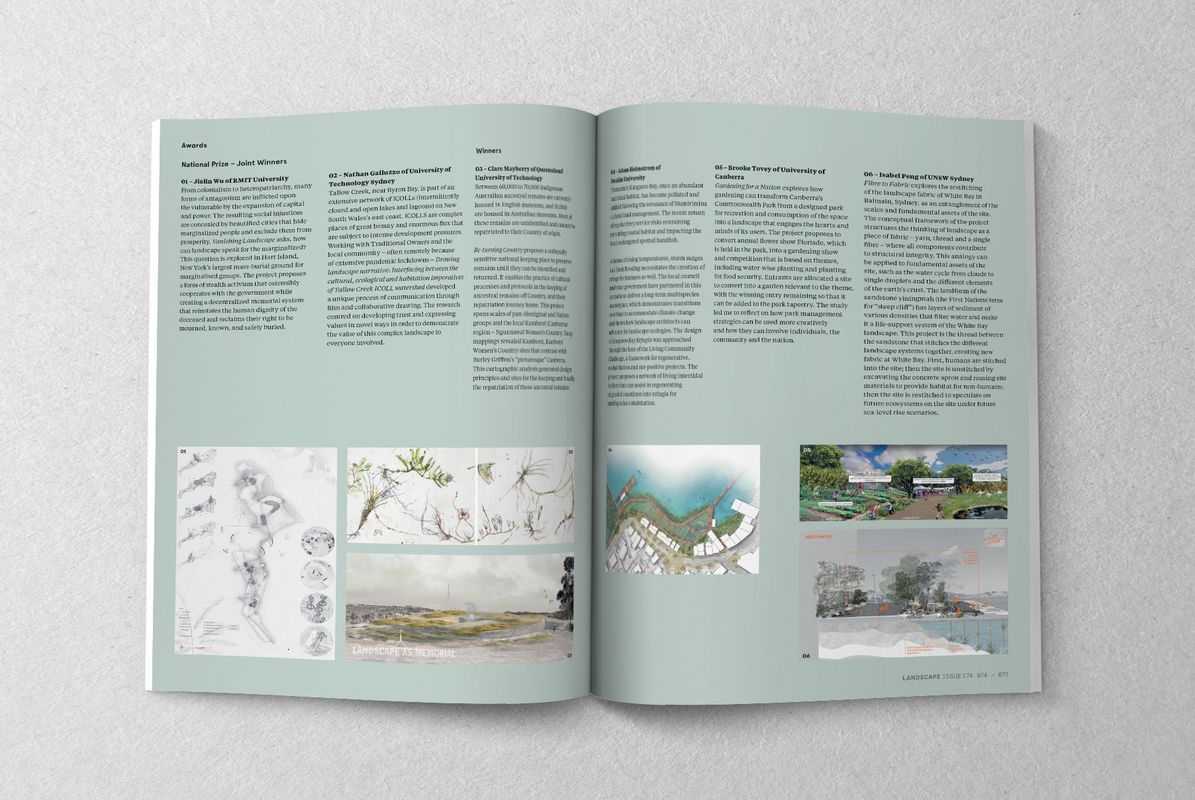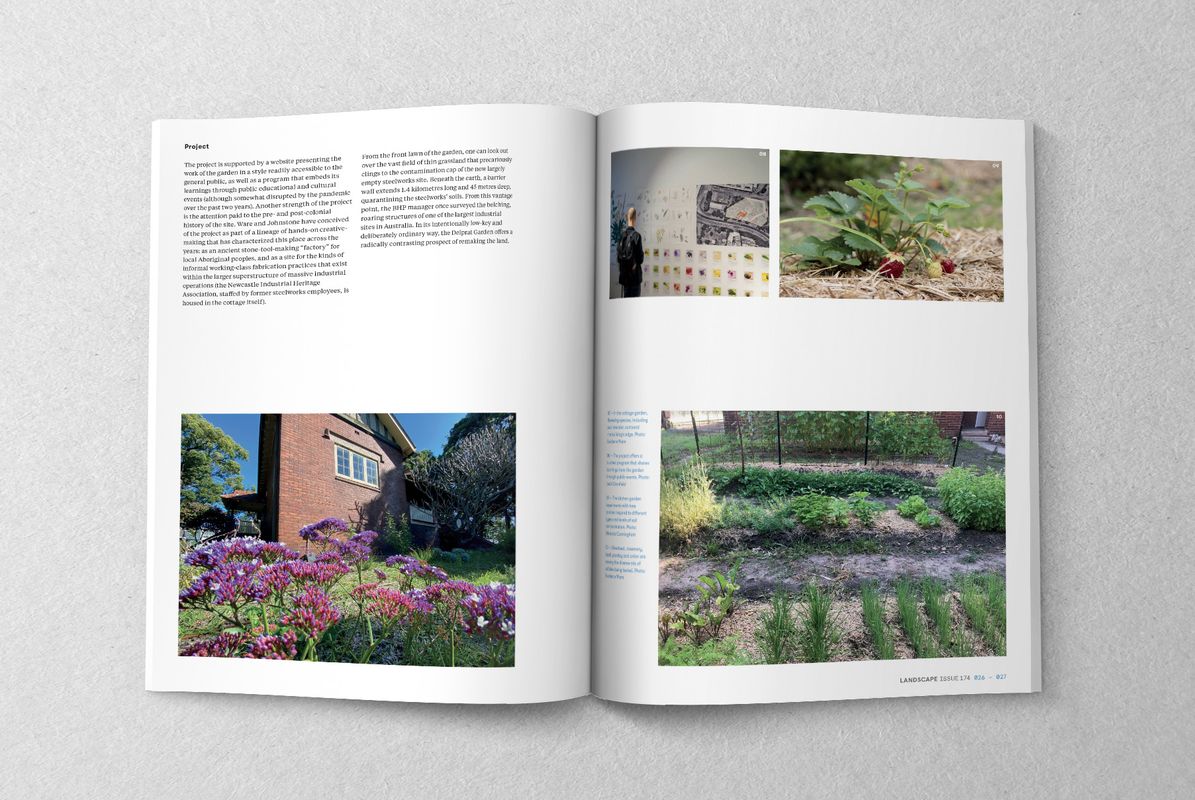Collectively, the articles and projects in our May issue present an optimistic view of what our cities and landscapes could be. We’re very pleased to feature Delprat Phytoremediation Garden (page 22), bathed in the sun’s late-afternoon glow, as our cover project. The garden is being used to test how species respond to soil contaminants and will provide us with vital knowledge that will transform planting design. The dual nature of plants – their visual and textural beauty as well as their performative (yet hidden) capacity to address pollution in the soil through their roots – is what makes this image so compelling.
Landscape architecture has often lagged behind the other built environment disciplines when it comes to the hierarchy of project leadership. Technology has the potential to enable or hinder the way that landscape architects are positioned. Jela Ivankovic-Waters considers the reasons for this and proposes ways that landscape architects can nurture a greater engagement with innovation in their studio workflows, design processes and techniques (page 36).
Sebastian Pfautsch discusses a project currently unfolding in Sydney’s Bicentennial Park that uses artificial intelligence (page 58). Although smart tech in cities is by now relatively widespread, this project opens up new possibilities for thinking about how we might design parks in the future, as data, cities and systems become increasingly linked. The maintenance and management of our landscapes has become a popular topic within the profession in recent years, as we move away from the approach that a design is “finished” when plants have been put in and towards a consideration of the role landscape architects might have in a project’s ongoing maintenance and care.
With climate change our foremost challenge, as designers, we need to do our utmost to find ways to adapt to a rapidly changing environment as well as to reduce our carbon footprints. With new tools constantly being developed and knowledge continually being updated, it is our professional responsibility to take on practical actions that ground our aspirations. To give a snapshot of the current landscape architectural climate in this regard, Sareh Moosavi, Anna Hürlimann and Judy Bush unpack some recent initiatives that chart new paths and show how even small changes at the detail level can quickly scale-up to achieve broader effects (page 53).
Finally, we’re excited to announce that we have commissioned two teams of guest-editors to collaborate with us in curating our next two editions of the magazine. We look forward to their insights as we work with them to present more critical perspectives on the future of the built environment.
– Emily Wong, editor
In this issue:
-
Viewpoint. A message from AILA CEO Ben Stockwin.
Light, growth, movement. The rejuvenation of a garden at an art museum looks to the past for inspiration. Review by Cassandra Chilton.
- Grounds for testing. An experimental garden in Newcastle is testing how plants respond to contamination. Review by Andrew Toland.
-
Salt and samphire. A freeway project in Adelaide’s north gives room to the landscape. Review by Tanya Court.
-
Embracing the innovation debate. To adapt and thrive, landscape architects must actively engage with new ways of working. Article by Jela Ivankovic-Waters.
-
Evidencing the benefits of green space. Unpacking how the design of green space affects our mental and physical wellbeing. Article by Thomas Astell-Burt and Xiaoqi Feng.
-
Increasing inclusivity. How can we design more age-friendly landscapes in our cities? Article by Tara Graham-Cochrane.
-
Decarbonizing landscape practice. What steps can we take to reduce the carbon footprint of our design processes and projects? Article by Sareh Moosavi, Anna Hürlimann and Judy Bush.
-
Designing for coolth. A project in Bicentennial Park is working to bring down temperatures in our rapidly densifying cities. Article by Sebastian Pfautsch.
-
Transitioning cities and post-COVID planning. Organizing our lives in a post-pandemic world means re-examining the values that drive our decisions. Article by Magnus Moglia, Steven Glackin and Andi Nygaard.
-
Design and disaster. Three landscape architects discuss their experiences working in the field of disaster and development. Article by Esther Charlesworth.
-
Landscape Student Prize. Presenting the winners of the annual Landscape Architecture Australia student prize.
-
Beyond wild. A recent monograph on the work of Raymond Jungles celebrates the living qualities of plants. Review by Michael Wright.
-
First project. Kate Cullity reflects on the design of Box Hill Community Arts Centre. Article by Kate Cullity.
Source

News
Published online: 28 Apr 2022
Words:
Emily Wong
Images:
Miranda Cunningham (cover image)
Issue
Landscape Architecture Australia, May 2022

